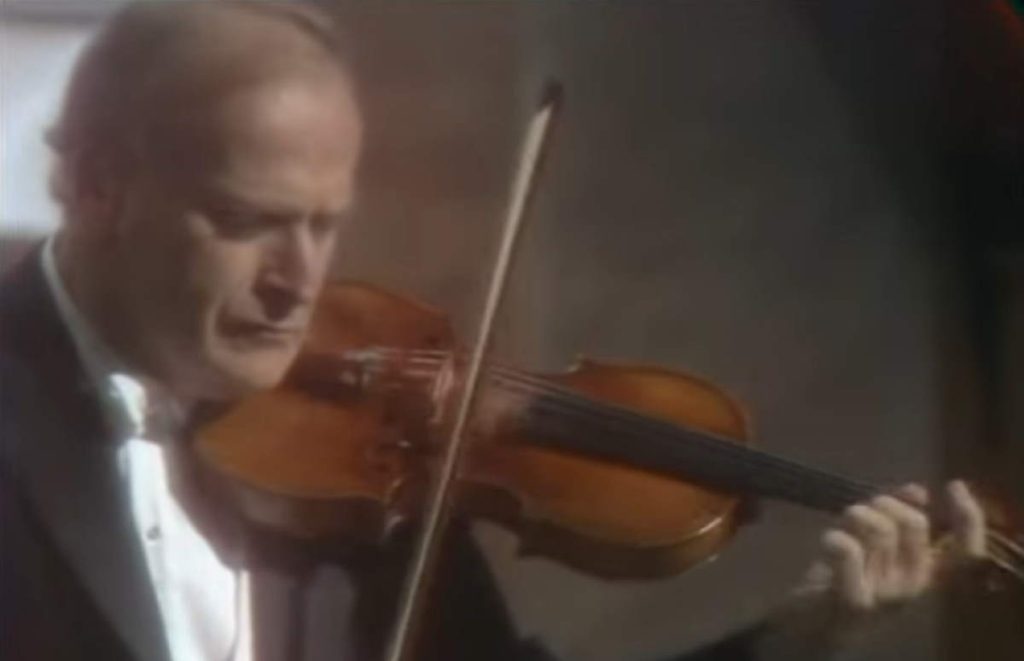French classical pianist Hélène Grimaud plays the last movement, Ciaccona (Chaconne) from Johann Sebastian Bach’s Partita No. 2 in D minor for solo violin (BWV 1004) on piano. Piano transcription of the piece was written by the Italian composer, pianist, conductor, editor, writer, and piano teacher Ferruccio Busoni (1 April 1866 – 27 July 1924).
Johann Sebastian Bach’s famous Chaconne
Johann Sebastian Bach’s Chaconne from his Partita No. 2 in D minor, BWV 1004, is widely regarded as one of the most profound and challenging works for solo violin. Bach wrote these pieces to show what the violin could do musically, and inevitably along the way had to make them (relatively) technical. Composed between 1717 and 1720, the Partita No. 2 concludes the Partita No. 2 and is unique for its length, depth, and emotional intensity, standing apart from typical Baroque dance movements.
The Chaconne is built on a simple repeating bass line that serves as the foundation for a complex series of variations. Over the course of fifteen minutes, Bach explores a vast range of emotions and techniques, with each variation adding new layers of expression, harmony, and intensity. Despite its structural simplicity, the piece unfolds as a vast emotional journey, taking the performer and listener through moments of sorrow, triumph, introspection, and transcendence.
The Chaconne has been interpreted as a tribute to Bach’s first wife, Maria Barbara, who passed away while he was traveling. The piece’s emotional depth, especially in the minor key, hints at themes of loss and resilience. Many see it as an exploration of human suffering and perseverance, and it has resonated deeply with musicians and audiences alike for centuries. The sheer technical demands of the piece require exceptional skill and endurance, as the violinist must maintain clarity and control across the variations, from delicate arpeggios to intense double-stops and fast passages.
The piece’s fame has also led to many adaptations, notably a piano transcription by the Italian pianist and composer Ferruccio Busoni (1 April 1866 – 27 July 1924), who expanded it into a powerful work for piano solo. Busoni’s version allows pianists to convey the Chaconne’s orchestral quality, bringing its emotional depth to a broader audience while honoring Bach’s original structure and intensity. The Chaconne remains a revered work in the violin repertoire, challenging performers not only technically but also interpretively, as they navigate its intricate emotions and complex variations, striving to convey the depth and universality of Bach’s vision.
Johann Sebastian Bach composed The Partita in D minor for solo violin (BWV 1004) between 1717 and 1720. Bach wrote these pieces to show what the violin could do musically, and inevitably along the way had to make them (relatively) technical.
The partita contains five movements, given in Italian:
- Allemanda
- Corrente
- Sarabanda
- Giga
- Ciaccona (Chaconne)
These movements are more frequently listed by their French names: Allemande, Courante, Sarabande, Gigue, and Chaconne.
Since Bach’s time, several transcriptions of the Chaconne have been made for other instruments, particularly for the piano (including those by Ferruccio Busoni, Alexander Siloti, Joachim Raff, and Rudolf Lutz), and for the piano left-hand (by Johannes Brahms, Paul Wittgenstein, and Géza Zichy).
Felix Mendelssohn and Robert Schumann each wrote piano accompaniments for the work.
German composer, conductor, and pianist in the mid-Romantic era, Carl Reinecke (23 June 1824 – 10 March 1910) transcribed the piece for the piano duet.
Sources
- Partita for Violin No. 2 (Bach) on Wikipedia
- “The Story Behind Bach’s Monumental Chaconne” on the O Being website
- Chaconne (Johann Sebastian Bach, BWV 1004) on the Violinorum website
- Ferruccio Busoni on Wikipedia

![Bach/Busoni: Chaconne [Mariam Batsashvili]](https://andantemoderato.com/wp-content/uploads/2023/10/Bach-Busoni-Chaconne-Mariam-Batsashvili-1024x576.jpg)